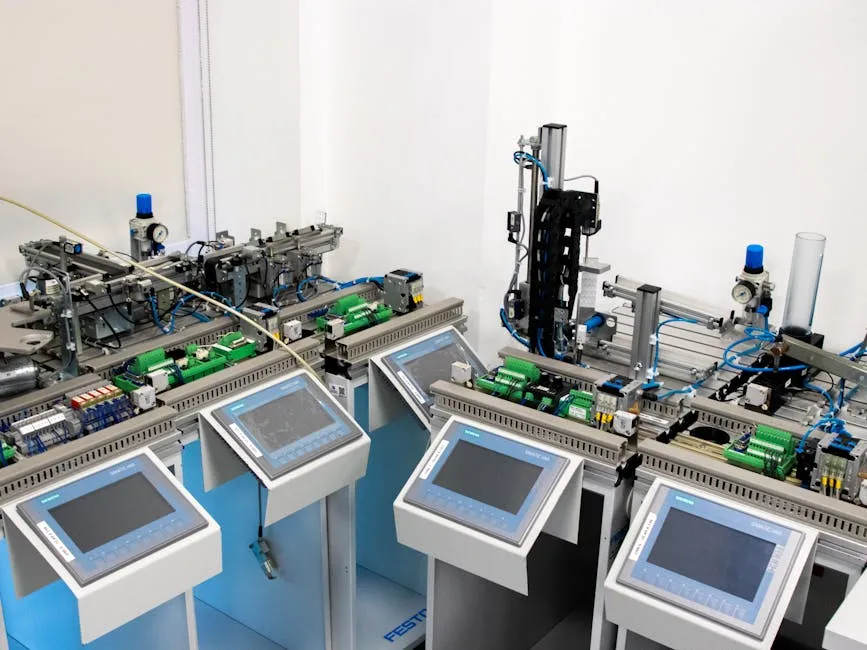This data-driven approach allows businesses to respond swiftly to market changes. With QSTA data, food professionals can anticipate customer needs and adjust their offerings accordingly. In essence, leveraging accurate data leads to smarter decisions that drive success. For more insights on data-driven decision making, check out this statistical decision making.
Leveraging accurate data leads to smarter decisions that drive success in the food industry. statistical decision making

Compliance and Certification
QSTA data is essential for maintaining compliance with industry regulations, such as GS1 standards. These standards ensure that products meet quality and safety benchmarks. By utilizing QSTA data, food businesses can easily track compliance metrics. This process minimizes the risk of penalties and recalls, which can be costly.
Certification plays a pivotal role in building consumer trust. When consumers see certifications like GS1, they feel assured about product quality. This trust can lead to increased customer loyalty and repeat business. QSTA data helps businesses prepare for audits and inspections, streamlining the certification process. Ultimately, it supports a transparent supply chain, making it easier for consumers to choose safe and reliable food products.

To help with compliance, consider a Food Safety Certification Guide that can assist you in understanding key regulations and best practices!
Challenges in QSTA Data Management
Data Accuracy and Integrity
Data accuracy is a significant challenge in QSTA management. Common issues include human error during data entry and outdated information. These inaccuracies can lead to poor decision-making and inefficiencies. For instance, incorrect inventory data might result in stock shortages or overstock situations, affecting profits.
To mitigate these challenges, businesses should implement regular data audits. This practice helps identify and correct inaccuracies promptly. Additionally, utilizing automated systems for data entry can reduce human error significantly. Training staff on the importance of data integrity is also crucial. By fostering a culture of accountability, organizations can ensure that their QSTA data remains accurate and reliable.

Integration with Existing Systems
Integrating QSTA data with legacy systems often presents significant hurdles. Many businesses rely on outdated software that may not support modern data formats. This can lead to data silos, where information is trapped in separate systems, hindering efficiency.
To overcome these integration challenges, consider using middleware solutions. These tools can bridge the gap between new QSTA data systems and legacy applications. Additionally, investing in modern software that supports APIs can facilitate smoother data transfers. Ensuring that staff are trained in the new systems is also vital for successful integration. By addressing these issues, food businesses can create a more cohesive data management strategy.

Future of QSTA Data
Innovations in Data Management
Emerging technologies are set to transform QSTA data management. Artificial Intelligence (AI) can analyze vast amounts of data quickly. This means food businesses can make more informed decisions based on real-time insights. Blockchain technology promises to enhance traceability in food supply chains. It ensures that every product’s journey is documented, boosting transparency and trust.
Additionally, the food industry is trending towards more data-driven practices. Expect increased use of predictive analytics to forecast inventory needs. This shift helps reduce waste and improve resource allocation. As technology advances, the integration of QSTA data with other systems will become smoother. With these innovations, food professionals can harness data like never before. For a specific example, see how predictive analytics was applied to the Croatia men’s national basketball team performance in 2024 here.
Emerging technologies are set to transform QSTA data management, enhancing efficiency and accuracy. predictive analytics for Croatia men’s national basketball team performance 2024

Building a Data-Driven Culture
For food businesses, fostering a data-driven culture is vital. Start by encouraging team members to use data in daily decision-making. Implement training sessions to boost data literacy among staff. This empowers employees to leverage insights effectively.
Next, establish clear data goals that align with business objectives. Regularly review data performance to encourage accountability. Use data visualization tools to make insights accessible. These tools help everyone understand complex data easily.
Lastly, celebrate data-driven successes. Recognizing team efforts reinforces the importance of data in achieving goals. By creating a supportive environment, food businesses can thrive in today’s competitive landscape.

FAQs
What is QSTA data and how is it used in the food industry?
QSTA data is a collection of quality standards for food management. It helps businesses ensure their products meet safety and quality benchmarks. This data is essential for food professionals in managing supply chains and enhancing operational efficiency.
How can QSTA data improve supply chain efficiency?
Using QSTA data can lead to a 30% reduction in operational waste. Accurate data allows for better inventory management, reducing spoilage. This means businesses can respond quickly to market demands, optimizing their supply chain processes and improving customer satisfaction.
What challenges might I face when implementing QSTA data solutions?
Common challenges include data accuracy and integration with existing systems. Inaccurate data can result from human error or outdated information. To tackle these issues, regular audits and automated data entry systems can help maintain data integrity.
Is QSTA data important for compliance in food sourcing?
Absolutely! QSTA data supports compliance with industry regulations like GS1 standards. It helps businesses track compliance metrics, minimizing penalties and ensuring products meet quality and safety requirements. Certification enhances consumer trust and loyalty.
How can I integrate QSTA data into existing systems?
Start by assessing your current systems for compatibility. Utilize middleware to connect new QSTA data solutions with legacy systems. Investing in modern software with API support can facilitate smoother integration and improve data flow across platforms.
What future trends should I watch for regarding QSTA data?
Emerging technologies like AI and blockchain are set to revolutionize QSTA data management. These innovations will enhance data accuracy and traceability in food supply chains. Expect increased use of predictive analytics to better forecast inventory needs.
Why is data accuracy crucial in food management?
Accurate data is vital for informed decision-making. It impacts procurement, sales, and overall operational efficiency. Poor data quality can lead to misinformed decisions, affecting product availability and customer satisfaction. High quality data is essential for successful food management.
Please let us know what you think about our content by leaving a comment down below!
Thank you for reading till here 🙂 And while you’re at it, grab some Meal Prep Containers to help you organize all those fresh ingredients!
All images from Pexels
Introduction
Have you ever wondered how data shapes the food industry? QSTA data plays a crucial role in ensuring quality and efficiency. As food supply chains grow more complex, effective data management becomes essential. This article will explore QSTA data, its applications, and the benefits it brings to food professionals.
Summary and Overview
So, what exactly is QSTA data? It encompasses essential metrics and standards that guide food management. This data is vital for both the online fresh produce market and wireless networking. By leveraging QSTA data, businesses can improve operational efficiency and maintain quality control throughout sourcing and distribution. Ultimately, managing quality data leads to better business outcomes.
The Importance of QSTA Data in the Food Industry
Understanding QSTA Data
QSTA data refers to a set of quality standards and metrics tailored for food management. It acts as a framework for ensuring that food products meet specific quality and safety requirements. By incorporating QSTA data, food professionals can significantly enhance quality assurance processes. It provides the necessary insights to optimize operations, reduce waste, and ensure compliance with industry regulations. This means fewer recalls, higher customer satisfaction, and a stronger brand reputation.
Key Features of QSTA Data
What makes QSTA data stand out? First, accuracy is paramount. Reliable data ensures food professionals make informed decisions. Timeliness is another key feature; up-to-date information allows for swift responses to market changes. Compliance with established standards, such as GS1, ensures that all products meet industry benchmarks. These features combine to create a robust data management system that enhances efficiency, ultimately benefiting food businesses in various sectors.

Speaking of accuracy, if you’re looking to streamline your inventory management, consider a top-notch Inventory Management System. It can help you track stock levels, reduce waste, and improve efficiency—all while keeping your sanity intact!
Applications of QSTA Data
In Fresh Produce Market
QSTA data revolutionizes sourcing and delivery in the fresh produce market. It provides real-time insights into inventory and demand, enabling businesses to make informed decisions. For instance, suppliers can quickly adjust stock levels based on current trends.
Take the example of a restaurant chain that uses QSTA data. By analyzing purchasing patterns, the chain can predict the demand for specific vegetables. This leads to more efficient ordering and reduces waste. As a result, restaurants enjoy fresher ingredients and lower costs.
Moreover, QSTA data enhances logistics by streamlining delivery processes. With accurate data, suppliers can optimize their routes, ensuring timely deliveries. This efficiency not only improves customer satisfaction but also strengthens relationships with suppliers.

Overall, QSTA data is a game changer, allowing businesses to operate more smoothly and effectively in the fresh produce market. And if you’re serious about fresh produce, don’t miss out on the Fresh Produce Recipe Book that will take your culinary skills to the next level!
In Wireless Networks
In wireless networks, QSTA plays a vital role, particularly in managing Quality of Service (QoS). A QSTA, or Quality of Service aware Station, helps prioritize network traffic. This is essential in food-related applications where data integrity is crucial.
Imagine a food delivery service that relies on real-time data to manage orders. With QSTA capabilities, the service ensures that critical data packets are transmitted first. This leads to faster processing times and reliable communication between servers and drivers.
The impact of QSTA on data transfer in the food industry cannot be overstated. It ensures that important transactions, such as order confirmations and updates, are processed without delay. In turn, this reliability can enhance customer trust and improve service quality.

For a seamless connection, consider investing in a Wireless Network Router to keep your operations running smoothly and efficiently!
Benefits of QSTA Data for Food Professionals
Enhanced Efficiency
QSTA data streamlines operations, leading to significant efficiency gains. By utilizing accurate data, businesses can reduce waste and optimize their processes. According to industry studies, companies that implement QSTA data see up to a 30% reduction in operational waste. This means more profits and less impact on the environment.
For example, a grocery store using QSTA data can better manage its inventory. By tracking product freshness, the store minimizes spoilage and ensures customers receive top-quality items. This proactive approach not only saves money but also enhances customer satisfaction.

To further enhance your efficiency, consider using a Smart Kitchen Scale that can help you measure ingredients accurately and ensure consistent quality in your food preparation!
Improved Decision Making
Accurate data is key to informed decision-making in procurement and sales. QSTA data provides real-time insights that help food professionals make better choices. A notable example includes a supplier that used QSTA data to identify underperforming products. By analyzing trends, they pivoted their strategy, resulting in a 20% increase in sales.
This data-driven approach allows businesses to respond swiftly to market changes. With QSTA data, food professionals can anticipate customer needs and adjust their offerings accordingly. In essence, leveraging accurate data leads to smarter decisions that drive success. For more insights on data-driven decision making, check out this statistical decision making.
Leveraging accurate data leads to smarter decisions that drive success in the food industry. statistical decision making

Compliance and Certification
QSTA data is essential for maintaining compliance with industry regulations, such as GS1 standards. These standards ensure that products meet quality and safety benchmarks. By utilizing QSTA data, food businesses can easily track compliance metrics. This process minimizes the risk of penalties and recalls, which can be costly.
Certification plays a pivotal role in building consumer trust. When consumers see certifications like GS1, they feel assured about product quality. This trust can lead to increased customer loyalty and repeat business. QSTA data helps businesses prepare for audits and inspections, streamlining the certification process. Ultimately, it supports a transparent supply chain, making it easier for consumers to choose safe and reliable food products.

To help with compliance, consider a Food Safety Certification Guide that can assist you in understanding key regulations and best practices!
Challenges in QSTA Data Management
Data Accuracy and Integrity
Data accuracy is a significant challenge in QSTA management. Common issues include human error during data entry and outdated information. These inaccuracies can lead to poor decision-making and inefficiencies. For instance, incorrect inventory data might result in stock shortages or overstock situations, affecting profits.
To mitigate these challenges, businesses should implement regular data audits. This practice helps identify and correct inaccuracies promptly. Additionally, utilizing automated systems for data entry can reduce human error significantly. Training staff on the importance of data integrity is also crucial. By fostering a culture of accountability, organizations can ensure that their QSTA data remains accurate and reliable.

Integration with Existing Systems
Integrating QSTA data with legacy systems often presents significant hurdles. Many businesses rely on outdated software that may not support modern data formats. This can lead to data silos, where information is trapped in separate systems, hindering efficiency.
To overcome these integration challenges, consider using middleware solutions. These tools can bridge the gap between new QSTA data systems and legacy applications. Additionally, investing in modern software that supports APIs can facilitate smoother data transfers. Ensuring that staff are trained in the new systems is also vital for successful integration. By addressing these issues, food businesses can create a more cohesive data management strategy.

Future of QSTA Data
Innovations in Data Management
Emerging technologies are set to transform QSTA data management. Artificial Intelligence (AI) can analyze vast amounts of data quickly. This means food businesses can make more informed decisions based on real-time insights. Blockchain technology promises to enhance traceability in food supply chains. It ensures that every product’s journey is documented, boosting transparency and trust.
Additionally, the food industry is trending towards more data-driven practices. Expect increased use of predictive analytics to forecast inventory needs. This shift helps reduce waste and improve resource allocation. As technology advances, the integration of QSTA data with other systems will become smoother. With these innovations, food professionals can harness data like never before. For a specific example, see how predictive analytics was applied to the Croatia men’s national basketball team performance in 2024 here.
Emerging technologies are set to transform QSTA data management, enhancing efficiency and accuracy. predictive analytics for Croatia men’s national basketball team performance 2024

Building a Data-Driven Culture
For food businesses, fostering a data-driven culture is vital. Start by encouraging team members to use data in daily decision-making. Implement training sessions to boost data literacy among staff. This empowers employees to leverage insights effectively.
Next, establish clear data goals that align with business objectives. Regularly review data performance to encourage accountability. Use data visualization tools to make insights accessible. These tools help everyone understand complex data easily.
Lastly, celebrate data-driven successes. Recognizing team efforts reinforces the importance of data in achieving goals. By creating a supportive environment, food businesses can thrive in today’s competitive landscape.

FAQs
Please let us know what you think about our content by leaving a comment down below!
Thank you for reading till here 🙂 And while you’re at it, grab some Meal Prep Containers to help you organize all those fresh ingredients!
All images from Pexels




